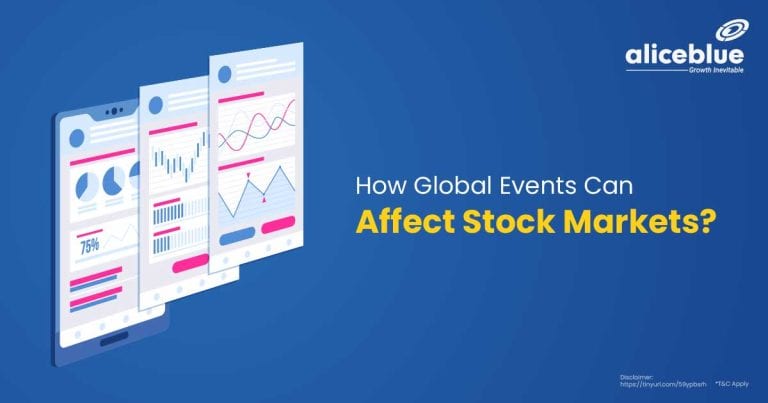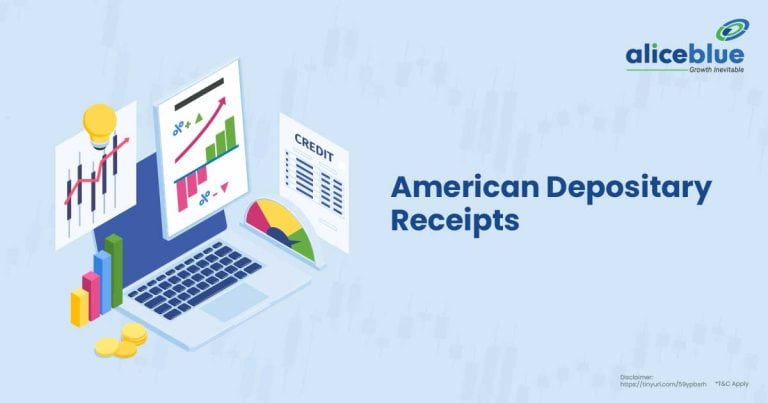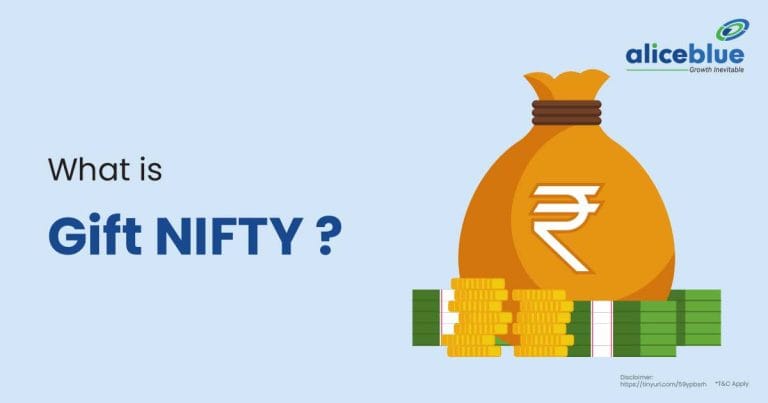The below table shows a list Of the Best Dynamic Bond Funds Based on AUM, NAV, and minimum SIP.
| Name | AUM (Cr) | NAV (Rs) | Minimum SIP (Rs) |
| SBI Dynamic Bond Fund | 3,195.85 | 36.66 | 500.00 |
| Bandhan Dynamic Bond Fund | 2,713.22 | 35.95 | 100 |
| Kotak Dynamic Bond Fund | 2,599.58 | 38.42 | 100 |
| Aditya Birla SL Dynamic Bond Fund | 1,687.62 | 46.28 | 1000 |
| DSP Strategic Bond Fund | 1,169.42 | 3,386.64 | 100 |
| 360 ONE Dynamic Bond Fund | 772.93 | 22.16 | 1,500.00 |
| HDFC Dynamic Debt Fund | 721.17 | 93.06 | 100 |
| UTI Dynamic Bond Fund | 456.33 | 31.43 | 1,500.00 |
| HSBC Dynamic Bond Fund | 161.95 | 30.03 | 1,500.00 |
| Baroda BNP Paribas Dynamic Bond Fund | 152.50 | 47.69 | 500 |
Introduction to Top Performing Dynamic Bond Funds in 1 Year
SBI Dynamic Bond Fund
SBI Dynamic Bond Direct Plan-Growth is a Dynamic Bond mutual fund scheme from Sbi Mutual Fund. This fund has been in existence for 11 years and 8 months, having been launched on 01/01/2013.
SBI Dynamic Bond Direct Plan-Growth as a Dynamic Bond Fund, manages assets valued at ₹3,195.85 crore. Over the past 5 years, it has achieved a Compound Annual Growth Rate (CAGR) of 7.23%. This fund has an exit load of 0.25% and an expense ratio of 0.62%. According to SEBI, it falls under the Very High-risk category. The fund’s asset allocation comprises: No Equity, Debt – 97.26%, and Other – 2.74%.
Bandhan Dynamic Bond Fund
Bandhan Dynamic Bond Fund Direct-Growth is a Dynamic Bond mutual fund scheme from Bandhan Mutual Fund. This fund has been in existence for 11 years and 8 months, having been launched on 01/01/2013.
Bandhan Dynamic Bond Fund as a Dynamic Bond Fund, manages assets valued at ₹2,713.22 crore. Over the past 5 years, it has achieved a Compound Annual Growth Rate (CAGR) of 7.25%. This fund has no exit load and an expense ratio of 0.73%. According to SEBI, it falls under the Very High-risk category. The fund’s asset allocation comprises: No Equity, Debt – 98.68%, and Other – 1.33%.
Kotak Dynamic Bond Fund
Kotak Dynamic Bond Fund Direct-Growth is a Dynamic Bond mutual fund scheme from Kotak Mahindra Mutual Fund. This fund has been in existence for 11 years and 8 months, having been launched on 01/01/2013.
Kotak Dynamic Bond Fund as a Dynamic Bond Fund, manages assets valued at ₹2,599.58 crore. Over the past 5 years, it has achieved a Compound Annual Growth Rate (CAGR) of 7.5%. This fund has no exit load and an expense ratio of 0.57%. According to SEBI, it falls under the Very High-risk category. The fund’s asset allocation comprises: No Equity, Debt – 91.32%, and Other – 8.68%.
Aditya Birla SL Dynamic Bond Fund
Aditya Birla Sun Life Dynamic Bond Retail Fund Direct-Growth is a Dynamic Bond mutual fund scheme from Aditya Birla Sun Life Mutual Fund. This fund has been in existence for 11 years and 8 months, having been launched on 01/01/2013.
Aditya Birla Sun Life Dynamic Bond Fund as a Dynamic Bond Fund, manages assets valued at ₹1,687.62 crore. Over the past 5 years, it has achieved a Compound Annual Growth Rate (CAGR) of 6.15%. This fund has an exit load of 0.5% and an expense ratio of 0.64%. According to SEBI, it falls under the Very High-risk category. The fund’s asset allocation comprises: No Equity, Debt – 98.8%, and Other – 1.2%.
DSP Strategic Bond Fund
DSP Strategic Bond Direct Plan-Growth is a Dynamic Bond mutual fund scheme from DSP Mutual Fund. This fund has been in existence for 11 years and 8 months, having been launched on 01/01/2013.
DSP Strategic Bond Direct Plan-Growth as a Dynamic Bond Fund, manages assets valued at ₹1,169.42 crore. Over the past 5 years, it has achieved a Compound Annual Growth Rate (CAGR) of 7.33%. This fund has no exit load and an expense ratio of 0.53%. According to SEBI, it falls under the Very High-risk category. The fund’s asset allocation comprises: No Equity, Debt – 87.16%, and Other – 12.84%.
360 ONE Dynamic Bond Fund
360 ONE Dynamic Bond Fund Direct-Growth is a Dynamic Bond mutual fund scheme from 360 One Mutual Fund. This fund has been in existence for 11 years and 3 months, having been launched on 06/06/2013.
360 ONE Dynamic Bond Fund as a Dynamic Bond Fund, manages assets valued at ₹772.93 crore. Over the past 5 years, it has achieved a Compound Annual Growth Rate (CAGR) of 7.08%. This fund has no exit load and an expense ratio of 0.27%. According to SEBI, it falls under the Very High-risk category. The fund’s asset allocation comprises: No Equity, Debt – 91.47%, and Other – 8.53%.
HDFC Dynamic Debt Fund
HDFC Dynamic Debt Fund Direct Plan-Growth is a Dynamic Bond mutual fund scheme from Hdfc Mutual Fund. This fund has been in existence for 11 years and 8 months, having been launched on 01/01/2013.
HDFC Dynamic Debt Fund as a Dynamic Bond Fund, manages assets valued at ₹721.17 crore. Over the past 5 years, it has achieved a Compound Annual Growth Rate (CAGR) of 7.66%. This fund has no exit load and an expense ratio of 0.74%. According to SEBI, it falls under the Very High-risk category. The fund’s asset allocation comprises: No Equity, Debt – 91.68%, and Other – 8.32%.
UTI Dynamic Bond Fund
UTI Dynamic Bond Fund Direct-Growth is a Dynamic Bond mutual fund scheme from UTI Mutual Fund. This fund has been in existence for 11 years and 8 months, having been launched on 01/01/2013.
UTI Dynamic Bond Fund as a Dynamic Bond Fund, manages assets valued at ₹456.33 crore. Over the past 5 years, it has achieved a Compound Annual Growth Rate (CAGR) of 8.56%. This fund has no exit load and an expense ratio of 0.7%. According to SEBI, it falls under the Very High-risk category. The fund’s asset allocation comprises: No Equity, Debt – 95.78%, and Other – 4.22%.
HSBC Dynamic Bond Fund
HSBC Dynamic Bond Fund Direct-Growth is a Dynamic Bond mutual fund scheme from HSBC Mutual Fund. This fund has been in existence for 11 years and 8 months, having been launched on 01/01/2013.
HSBC Dynamic Bond Fund as a Dynamic Bond Fund, manages assets valued at ₹161.95 crore. Over the past 5 years, it has achieved a Compound Annual Growth Rate (CAGR) of 6.41%. This fund has no exit load and an expense ratio of 0.2%. According to SEBI, it falls under the Very High-risk category. The fund’s asset allocation comprises: No Equity, Debt – 98.49%, and Other – 1.51%.
Baroda BNP Paribas Dynamic Bond Fund
Baroda BNP Paribas Dynamic Bond Plan Direct-Growth is a Dynamic Bond mutual fund scheme from Baroda Bnp Paribas Mutual Fund. This fund has been in existence for 11 years and 8 months, having been launched on 01/01/2013.
Baroda BNP Paribas Dynamic Bond Plan Direct-Growth as a Dynamic Bond Fund, manages assets valued at ₹152.50 crore. Over the past 5 years, it has achieved a Compound Annual Growth Rate (CAGR) of 6.69%. This fund has no exit load and an expense ratio of 0.71%. According to SEBI, it falls under the Very High-risk category. The fund’s asset allocation comprises: No Equity, Debt – 98.37%, and Other – 1.64%.

What Are Dynamic Bond Funds?
Dynamic bond funds are a type of mutual fund that invests across various debt instruments with different maturities. They provide fund managers the flexibility to adjust the portfolio based on changing interest rate scenarios, aiming to maximize returns.
These funds can shift between short-term and long-term bonds depending on market conditions. For instance, when interest rates are expected to rise, managers may favor short-term securities, while they might invest in long-term bonds when rates are expected to fall, allowing for strategic adjustments.
The flexibility makes dynamic bond funds suitable for investors seeking stable returns in fluctuating interest rate environments. However, their performance depends largely on the fund manager’s ability to forecast interest rate trends accurately. As a result, there’s a moderate level of risk involved.
Features Of Top Performing Dynamic Bond Funds in 1 Year
The main features of top-performing credit risk funds over 1 year include higher returns by investing primarily in lower-rated corporate bonds. These funds take on more credit risk but compensate with increased yields, outperforming traditional debt funds in favorable market conditions.
- Higher Yield: Credit risk funds typically invest in lower-rated debt securities, offering higher yields compared to other debt funds. This compensates for the added credit risk by providing investors with better returns.
- Moderate to High Risk: These funds carry moderate to high credit risk due to their focus on lower-rated bonds. The risk is higher than traditional debt funds, but they offer the potential for better returns in a stable economy.
- Diversified Portfolio: Credit risk funds often diversify their portfolio by spreading investments across multiple industries and issuers, reducing exposure to any single entity’s default while enhancing overall return potential.
- Interest Rate Sensitivity: Though primarily focused on credit risk, these funds are also sensitive to interest rate changes. They perform better in stable or declining interest rate environments, as rising rates may negatively impact their returns.
Best Performing Dynamic Bond Funds in 1 Year
The table below shows the Best-performing Dynamic Bond Funds Based on the highest to lowest expense ratio.
| Name | Expense Ratio (%) | Minimum SIP (Rs) |
| HDFC Dynamic Debt Fund | 0.74 | 100 |
| Bandhan Dynamic Bond Fund | 0.73 | 100 |
| Baroda BNP Paribas Dynamic Bond Fund | 0.71 | 500 |
| UTI Dynamic Bond Fund | 0.7 | 1,500.00 |
| Canara Rob Dynamic Bond Fund | 0.68 | 1,000.00 |
| Aditya Birla SL Dynamic Bond Fund | 0.64 | 1000 |
| SBI Dynamic Bond Fund | 0.62 | 500.00 |
| Kotak Dynamic Bond Fund | 0.57 | 100 |
| DSP Strategic Bond Fund | 0.53 | 100 |
| Quantum Dynamic Bond Fund | 0.51 | 500 |
List of Top Performing Dynamic Bond Funds in 1 Year
The table below shows the Best Dynamic Bond Funds Based on the Highest 3Y CAGR.
| Name | CAGR 3Y (%) | Minimum SIP (Rs) |
| UTI Dynamic Bond Fund | 11.68 | 1,500.00 |
| Aditya Birla SL Dynamic Bond Fund | 7.42 | 1000 |
| SBI Dynamic Bond Fund | 7.06 | 500.00 |
| Baroda BNP Paribas Dynamic Bond Fund | 6.76 | 500 |
| Quantum Dynamic Bond Fund | 6.76 | 500 |
| DSP Strategic Bond Fund | 6.73 | 100 |
| Kotak Dynamic Bond Fund | 6.72 | 100 |
| ITI Dynamic Bond Fund | 6.61 | 500 |
| PGIM India Dynamic Bond Fund | 6.58 | 1,000.00 |
| 360 ONE Dynamic Bond Fund | 6.48 | 1,500.00 |
Top Performing Dynamic Bond Funds in 1 Year
The table below shows Best Performing Dynamic Bond Funds In India Based on Exit Load, i.e., the fee that the AMC charges investors when they exit or redeem their fund units.
| Name | AMC | Exit Load (%) |
| UTI Dynamic Bond Fund | UTI Asset Management Company Private Limited | 0 |
| SBI Dynamic Bond Fund | SBI Funds Management Limited | 0.25 |
| Quantum Dynamic Bond Fund | Quantum Asset Management Company Private Limited | 0 |
| PGIM India Dynamic Bond Fund | PGIM India Asset Management Private Limited | 0 |
| Mahindra Manulife Dynamic Bond Fund | Mahindra Manulife Investment Management Private Limited | 0 |
| Kotak Dynamic Bond Fund | Kotak Mahindra Asset Management Company Limited | 0 |
| ITI Dynamic Bond Fund | ITI Asset Management Limited | 0 |
| HSBC Dynamic Bond Fund | HSBC Global Asset Management (India) Private Limited | 0 |
| HDFC Dynamic Debt Fund | HDFC Asset Management Company Limited | 0 |
| DSP Strategic Bond Fund | DSP Investment Managers Private Limited | 0 |
Factors To Consider When Investing In Top Performing Dynamic Bond Funds in 1 Year
The main factors to consider when investing in top-performing dynamic bond funds over 1 year include interest rate trends, fund manager expertise, credit quality of the portfolio, and expense ratios. These elements directly influence the fund’s performance and risk-adjusted returns.
- Interest Rate Outlook: Assessing future interest rate movements is critical. Dynamic bond funds adjust their portfolios based on rate expectations, so understanding if rates will rise or fall helps determine the fund’s potential performance over time.
- Fund Manager Expertise: The ability of the fund manager to make strategic decisions plays a vital role. A seasoned manager with a good track record in navigating various interest rate cycles can significantly improve the fund’s returns.
- Credit Quality: Review the credit rating of the bonds within the portfolio. While dynamic bond funds offer flexibility, their risk level increases if the portfolio contains a higher proportion of lower-rated securities.
- Expense Ratio: Consider the fund’s expense ratio, as it directly impacts net returns. Lower expense ratios are preferable because they ensure that a greater portion of returns is passed on to the investor rather than absorbed by fund management fees.
How To Invest In Top Performing Dynamic Bond Funds in 1 Year?
To invest in top-performing dynamic bond funds over 1 year, first research and compare funds based on performance, expense ratios, and credit risk. Evaluate the interest rate outlook and choose funds that align with your financial goals and risk tolerance.
Next, open an account with Alice Blue that offers access to a wide range of mutual funds. These platforms allow you to invest online, track fund performance, and manage your portfolio with ease, simplifying the investment process.
Once your account is set up, select the dynamic bond fund of your choice, set your investment amount, and complete the transaction. Many platforms also offer the option for systematic investment plans (SIPs) for regular contributions.
Advantages Of Investing In Top Performing Dynamic Bond Funds in 1 Year
The main advantages of investing in top-performing dynamic bond funds over 1 year include flexibility in adjusting to interest rate changes, the potential for higher returns compared to traditional debt funds, active management, and moderate risk levels suitable for varying market conditions.
- Flexibility: Dynamic bond funds can adjust their portfolio between short-term and long-term bonds based on interest rate forecasts. This flexibility allows the fund to potentially outperform in both rising and falling interest rate environments, providing investors with adaptable solutions.
- Higher Returns: These funds have the potential to deliver higher returns compared to traditional debt funds due to their ability to shift between different maturities and credit qualities, allowing fund managers to capitalize on interest rate movements.
- Active Management: The active management style of dynamic bond funds ensures that professional fund managers make strategic decisions based on evolving market conditions, which can help in optimizing returns and reducing risks associated with market volatility.
- Moderate Risk: While dynamic bond funds involve interest rate risk, they are considered to have moderate risk levels compared to high-yield debt instruments. This makes them suitable for investors seeking better returns than traditional bonds, but without taking on excessive risk.
Risks Of Investing In Top Performing Dynamic Bond Funds in 1 Year
The main risks of investing in top-performing dynamic bond funds over 1 year include interest rate volatility, credit risk, reliance on fund manager decisions, and market liquidity issues. These factors can affect the fund’s performance, potentially leading to lower-than-expected returns or losses.
- Interest Rate Volatility: Dynamic bond funds are sensitive to changes in interest rates. Unexpected hikes in rates can negatively impact bond prices, leading to potential losses, especially if the fund holds long-term securities during periods of rising interest rates.
- Credit Risk: Depending on the portfolio composition, dynamic bond funds may invest in lower-rated bonds. If the credit quality of these bonds deteriorates, there’s a risk of default, leading to potential capital loss or a drop in the fund’s overall value.
- Manager Risk: The fund’s performance heavily depends on the fund manager’s ability to forecast interest rate trends and adjust the portfolio accordingly. Poor decisions or misjudgments can negatively affect returns, especially in unpredictable market environments.
- Liquidity Risk: Some bonds in the fund’s portfolio may be difficult to sell quickly, particularly in times of market stress. This can limit the fund’s ability to adjust positions and affect its overall liquidity, potentially impacting investors’ ability to redeem units.
Importance of Dynamic Bond Fund
A dynamic bond fund is a mutual fund that invests in various debt instruments with different maturities, offering flexibility to adjust based on market conditions. Its importance lies in providing stable returns by actively managing interest rates and credit risks.
Dynamic bond funds are valuable for investors seeking adaptable investments, as they adjust between short-term and long-term bonds depending on interest rate trends. This ability to shift strategies helps mitigate risks in volatile markets while aiming to optimize returns for investors.
How Long to Stay Invested in Dynamic Bond Fund?
Investors should typically stay invested in dynamic bond funds for a medium to long-term horizon, usually 3 to 5 years. This allows the fund to fully leverage its flexibility in adjusting to interest rate cycles and market conditions for optimal returns.
Shorter holding periods may expose investors to interest rate volatility, as bond prices can fluctuate in the short term. By staying invested for a longer duration, investors can benefit from the fund’s adjustments and smooth out returns over time, reducing risk.
Tax Implications of Investing in Dynamic Bond Fund
Tax implications for dynamic bond funds depend on the holding period. If held for less than 3 years, returns are taxed as short-term capital gains, according to your income tax slab. Longer holding periods incur long-term capital gains tax.
For long-term investments, dynamic bond fund gains are taxed at 20% with indexation benefits, which adjust the purchase price for inflation. This helps reduce the taxable amount, making long-term holding more tax-efficient compared to short-term investments.
Future of Dynamic Bond Fund
The future of dynamic bond funds appears promising, given their ability to adapt to fluctuating interest rates. As global economic uncertainties continue, these funds offer flexibility, allowing investors to navigate changing market conditions with a more responsive investment strategy.
With increasing investor demand for adaptable debt instruments, dynamic bond funds are likely to grow in popularity. Their active management and flexibility in adjusting maturities make them well-suited to evolving economic landscapes, offering both risk management and return optimization opportunities for the future.

Top Performing Dynamic Bond Funds in 1 Year FAQs
A dynamic bond fund is a type of mutual fund that invests in various debt instruments with flexible maturities. It actively adjusts its portfolio based on interest rate forecasts and market conditions to optimize returns and manage risk.
Top Dynamic Bond Funds #1: SBI Dynamic Bond Fund
Top Dynamic Bond Funds #2: Bandhan Dynamic Bond Fund
Top Dynamic Bond Funds #3: Kotak Dynamic Bond Fund
Top Dynamic Bond Funds #4: Aditya Birla SL Dynamic Bond Fund
Top Dynamic Bond Funds #5: DSP Strategic Bond Fund
These funds are listed based on the Highest AUM.
The Best Dynamic Bond Funds based on expense ratio include HDFC Dynamic Debt Fund, Bandhan Dynamic Bond Fund, Baroda BNP Paribas Dynamic Bond Fund, UTI Dynamic Bond Fund, and Canara Rob Dynamic Bond Fund.
Investing in top-performing dynamic bond funds over 1 year can be beneficial if you seek flexibility and potentially higher returns. However, it’s essential to consider interest rate trends, credit risk, and your own risk tolerance before investing.
The different types of dynamic bonds include short-term, intermediate-term, and long-term bonds. Each type varies in maturity and sensitivity to interest rate changes. Dynamic bond funds often shift between these types based on interest rate forecasts and market conditions.
To invest in the best-performing dynamic bond funds over 1 year, research top funds, open an account with Alice Blue, and select the fund based on performance and risk factors. Use the platform to manage and monitor your investment.
We hope you’re clear on the topic, but there’s more to explore in stocks, commodities, mutual funds, and related areas. Here are important topics to learn about.
Disclaimer: The above article is written for educational purposes, and the companies’ data mentioned in the article may change with respect to time. The securities quoted are exemplary and are not recommendatory.








